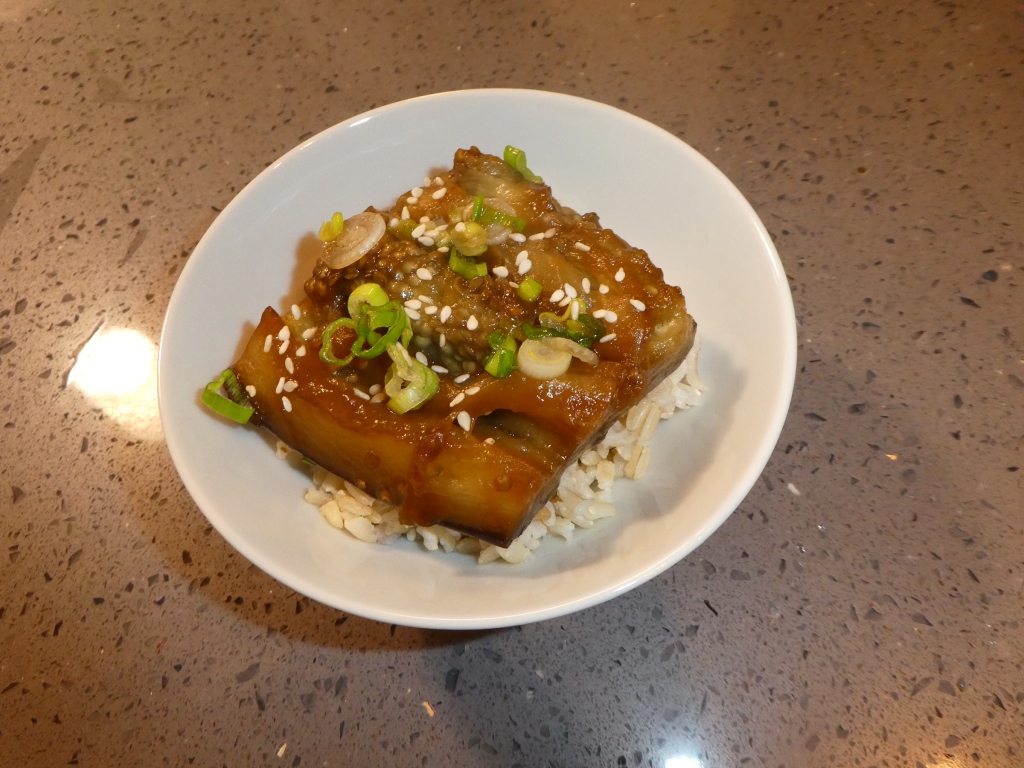
The original recipe calls for Japanese or Chinese eggplants, which are smaller than the standard kind you see in supermarkets. I have adapted it to use regular American eggplants, since those are easier to find.
Eggplant “Unagi”
Adapted from Woks of Life
Yield: 2-4 servings, depending on how hungry you are
- 1 – 1 1/2 lbs eggplant (1 regular American eggplant)
- 2-3 tablespoons vegetable oil
- 2 teaspoons light soy sauce
- 1 tablespoon mirin
- 2 tablespoons water
- 1/2 teaspoon sugar
- 1/2 teaspoon dark soy sauce
- 1/2 teaspoon oyster sauce
- 1/2 teaspoon fish sauce
- 1 green onion, chopped
- 1 teaspoon sesame seeds
- Cut eggplant into rounds about 2 inches thick. Cut the larger rounds in half (into semi-circles). Place the pieces in a heatproof dish or in the inner pot of a Tatung-style rice cooker if you have one.
- Boil water in your steamer, or your wok with a bamboo steamer, or a pan with a steamer rack and lid. Alternatively, if you have a Tatung-style rice cooker, place 1 1/2 cups water in the outer pot (this is standard measuring cups; it is the equivalent of 2 of the little plastic measuring cups that come with the rice cooker).
- If you’re steaming the eggplant on the stove, steam on medium heat for 16-18 minutes, until a knife pierces through the eggplant easily. If you’re using a rice cooker, just set the rice cooker to cook; it will take about 40 minutes.
- After the eggplant has been steamed and is cool enough to handle, open each piece up like a book. Use two forks to open up the flesh of the eggplant even more. This creates more surface area for the sauce you’ll braise it in later.
- Heat 2 tablespoons of oil in a nonstick skillet over medium high heat. Pan-fry the eggplant on both sides until golden brown on each side. (If you need additional oil, you can add 1 more tablespoon).
- Meanwhile, combine the light soy sauce, mirin, water, dark soy sauce, oyster sauce, fish sauce, and sugar in a small bowl.
- Pour the sauce mixture into the eggplant, and simmer until reduced by half. Sprinkle green onion on top so the residual heat cooks it a little.
- Sprinkle with sesame seeds.
